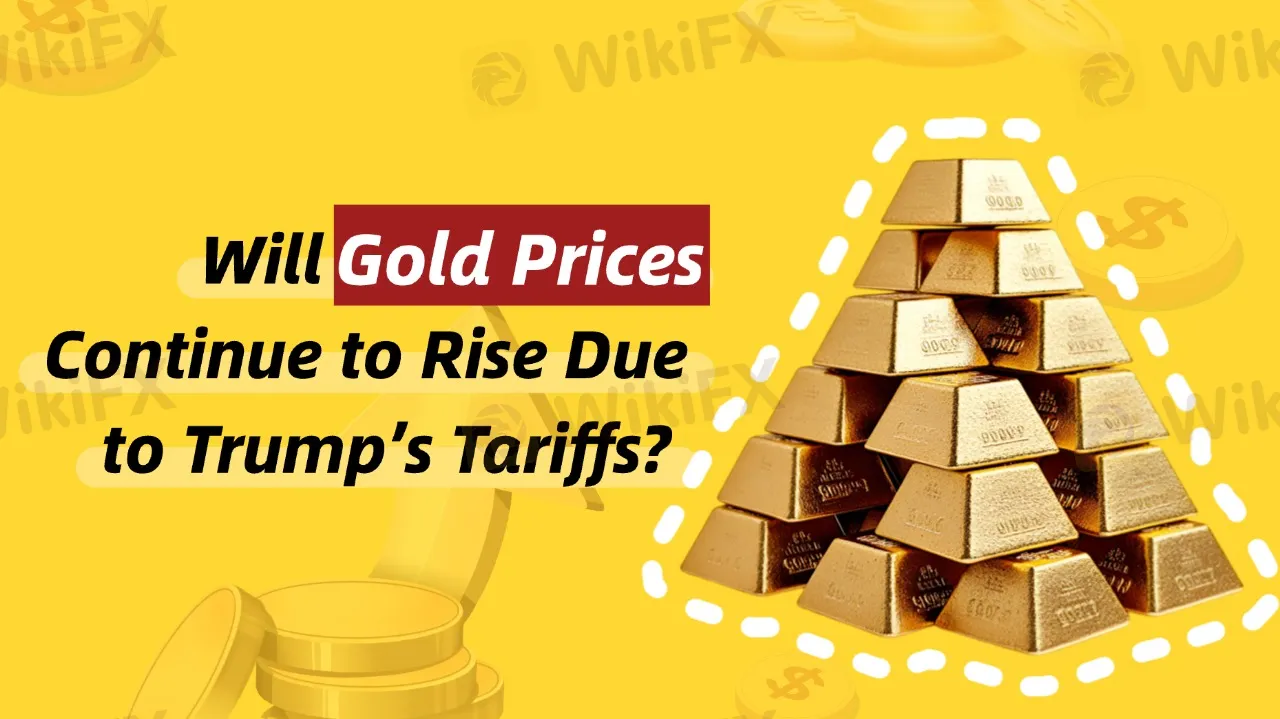简体中文
繁體中文
English
Pусский
日本語
ภาษาไทย
Tiếng Việt
Bahasa Indonesia
Español
हिन्दी
Filippiiniläinen
Français
Deutsch
Português
Türkçe
한국어
العربية
Will Gold Prices Continue to Rise Due to Trump’s Tariffs?
Abstract:Recently, gold prices have been driven by rising U.S. government debt, persistent inflation, and growing economic uncertainty, showing strong performance.

Last week, gold prices briefly broke through the key $2,700 per ounce level, reaching as high as $2,726. Despite a slight pullback last Friday, the weekly gain remained nearly 0.5%, closing at $2,702.35 per ounce. On Monday morning (January 20), spot gold showed some weakness, trading near $2,690, mainly influenced by the effective ceasefire agreement in Gaza and the strength of the U.S. dollar. However, analysts remain optimistic about gold's upward momentum.
From a technical perspective, gold is currently facing a key resistance level at $2,725, and breaking through this level remains challenging. Despite a recent rebound, it is uncertain whether gold will be able to break through this strong resistance. If successful, gold could continue to rise to $2,770 or higher. If the resistance holds, support may be found near $2,694, with further downside potentially reaching the $2,600 support region. However, if gold remains above $2,700, its potential for further gains will increase.
Impact of Trump‘s Tariffs on Gold Prices
The Trump administration’s statements about supporting U.S. manufacturing through trade tariffs have drawn attention. These have raised concerns about inflation and fears that global economic growth may be impacted by a trade war. As a safe-haven asset, gold tends to perform well in times of economic uncertainty and geopolitical tension. Trumps tariff policies are likely to intensify this uncertainty, supporting gold prices. In times of risk, gold attracts safe-haven capital.
In the short term, $2,725 remains a key resistance level. Whether gold can break through this level will depend on the impact of Trump‘s policies on the U.S. dollar, yields, and expectations for interest rate cuts. If tariff and spending policies affect economic growth and fiscal deficits, gold’s upward momentum may be supported.
Trumps tariff policies may boost the U.S. dollar in the short term, but in the long run, inflation could make gold a top safe-haven investment.
Overall, although gold has performed strongly recently, its future movement will depend on global economic conditions and Trumps policy changes. If concerns over tariffs and slowing economic growth continue, gold may break through current resistance and see new upside potential. However, in the short term, gold could face some technical pressure, and investors should watch for the latest developments.

Disclaimer:
The views in this article only represent the author's personal views, and do not constitute investment advice on this platform. This platform does not guarantee the accuracy, completeness and timeliness of the information in the article, and will not be liable for any loss caused by the use of or reliance on the information in the article.
Read more

The Impact of Interest Rate Decisions on the Forex Market
Interest rate changes determine currency attractiveness, influencing capital flows and exchange rate trends. Understanding this mechanism helps investors navigate the forex market effectively.

How a Housewife Lost RM288,235 in a Facebook Investment Scam
A 47-year-old housewife in Malaysia recently fell victim to an online investment scam, losing a substantial sum of RM288,235 after engaging with a fraudulent scheme advertised on Facebook.

Interactive Brokers Launches Forecast Contracts in Canada for Market Predictions
Interactive Brokers introduces Forecast Contracts in Canada, enabling investors to trade on economic, political, and climate outcomes. Manage risk with ease.

Bank Negara Malaysia Flags 12 New Companies for Unauthorised Activity
Bank Negara Malaysia (BNM) has updated its Financial Consumer Alert List (FCA List) by adding 12 more entities, reinforcing its efforts to warn the public against unregulated financial schemes. Check if your broker made the list!
WikiFX Broker
Latest News
The Withdrawal Trap: How Scam Brokers Lure Victims into Paying More
FCA to Investors: Think Twice Before Trusting These Brokers
Trump\s tariffs: How could they affect the UK and your money
Trump gambles it all on global tariffs he\s wanted for decades
TradingView Brings Live Market Charts to Telegram Users with New Mini App
Trump tariffs: How will India navigate a world on the brink of a trade war?
Interactive Brokers Launches Forecast Contracts in Canada for Market Predictions
Authorities Alert: MAS Impersonation Scam Hits Singapore
IG Group Acquires Freetrade for £160M to Expand UK Investment Market
U.S. March ISM Manufacturing PMI Released
Currency Calculator







